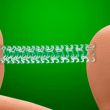Percutaneous treatment of coronary lesions affecting bifurcations has increased in recent decades. Coronary angioplasty (percutaneous coronary intervention, PCI) in these cases is associated with an increased rate of adverse events in patients with multivessel disease and left main coronary artery lesions. The SYNTAX score, which is a predictor of total mortality, is used to evaluate<a href="https://solaci.org/en/2022/07/01/coronary-bifurcation-lesions-mrs-or-pci-10-year-mortality-of-the-syntax-study/" title="Read more" >...</a>
Results of Zotarolimus-Eluting Stents vs Biolimus-Eluting Polymer-Free Stents After 2 Years. Are They Safe in Patients at High Risk for Bleeding?
The proportion of patients treated with coronary angioplasty who are at a high risk for bleeding is increasing. In this population, extended dual antithrombotic therapy increases the risk of bleeding. The 1-year randomized Onyx one study has demonstrated the non-inferiority of zotarolimus-eluting stents (ZES) vs. biolimus-coated polymer-free stent BioFreedom (DCS). Patients received dual-antiplatelet therapy (DAPT)<a href="https://solaci.org/en/2022/06/22/results-of-zotarolimus-eluting-stents-vs-biolimus-eluting-polymer-free-stents-after-2-years-are-they-safe-in-patients-at-high-risk-for-bleeding/" title="Read more" >...</a>
The Current Role of Thrombus Aspiration in Primary PCI
In general, thrombus aspiration in acute myocardial infarction (AMI) has not been shown beneficial by large studies. It could even be prejudicial, since it has been associated with stroke. However, there are certain scenarios where the presence of a significant number of these prevents us from reaching adequate TIMI flow 3, or is associated with<a href="https://solaci.org/en/2022/06/15/the-current-role-of-thrombus-aspiration-in-primary-pci/" title="Read more" >...</a>
Using Biolimus-Coated Balloons for Treating Small-Vessel Disease Yields Promising Results
Drug-eluting balloons have demonstrated safety and effectiveness in the treatment of small-vessel coronary artery disease and in-stent restenosis. However, randomized studies were performed using paclitaxel. Several studies have shown that using biolimus, a semisynthetic analog of sirolimus, optimizes drug delivery in both stents and balloons. The aim of this randomized, multicenter study was to evaluate<a href="https://solaci.org/en/2022/06/13/using-biolimus-coated-balloons-for-treating-small-vessel-disease-yields-promising-results/" title="Read more" >...</a>
Should We Start Thinking Again About Bioresorbable Stents?
Coronary revascularization with drug-eluting stents (DES) is very frequent, especially in acute coronary syndromes, but these metallic stents are permanent foreign bodies that activate the entire inflammatory system. Using bioresorbable stents (BRS) emerged as an alternative to this challenge. Although the initial results of the ABSORB study were not as expected (probably due to a<a href="https://solaci.org/en/2022/06/09/should-we-start-thinking-again-about-bioresorbable-stents/" title="Read more" >...</a>
EuroPCR 2022 | Should Revascularization Be Performed Before TAVR in Patients with Stable Coronary Disease?
Currently, the American and European guidelines recommend coronary angioplasty in patients with severe aortic stenosis with lesions >70% (Class IIa) who will undergo transcatheter aortic valve replacement (TAVR). However, the benefit of performing a revascularization in these patients is still uncertain. This prospective multicenter study included 2025 patients divided into two groups: complete revascularization (N = 1310)<a href="https://solaci.org/en/2022/05/24/europcr-2022-should-revascularization-be-performed-before-tavr-in-patients-with-stable-coronary-disease/" title="Read more" >...</a>
OCT in STEMI Patients: Is It Safe to Prevent Stenting?
Percutaneous coronary intervention in patients with acute myocardial infarction (AMI) where the physiopathological mechanism is plaque erosion or non-atherosclerotic mechanisms (such as spontaneous coronary artery dissection) is not beneficial according to recent studies. The EROSION study (Effective Anti-Thrombotic Therapy Without Stenting: Intravascular Optical Coherence Tomography–Based Management in Plaque Erosion) has shown medical treatment with no<a href="https://solaci.org/en/2022/04/20/oct-in-stemi-patients-is-it-safe-to-prevent-stenting/" title="Read more" >...</a>
Is iFR Reliable After 5 Years? Analyzing the iFR-SWEDEHEART at 5 Years
Fractional flow reserve (FFR) proved to be very useful and safe in the FAME study, but its trade-off was using adenosine (which has a short half-life) and adverse reactions, which fortunately were rare. Subsequently, two large studies—the iFR-SWEDEHEART and DEFINE-FLAIR—demonstrated that instantaneous wave-free ratio (iFR) offered comparable results to FFR in the short term, avoiding<a href="https://solaci.org/en/2022/04/19/is-ifr-reliable-after-5-years-analyzing-the-ifr-swedeheart-at-5-years/" title="Read more" >...</a>
ACC 2022 | PACMAN AMI
Atherosclerosis plaque causing AMI is often large in volume, high in lipids and have a thin fibrous cap. Statins often reduce atherosclerosis progress, but the impact of PCSK 9 inhibitors (alirocumab) after acute coronary syndrome is scarcely known. The aim of this study was to determine the effect of alirocumab using intracoronary imaging (IVUS, OCT,<a href="https://solaci.org/en/2022/04/08/acc-2022-pacman-ami/" title="Read more" >...</a>
Are There Differences Between Women and Men After a Percutaneous Intervention?
Prior research has shown that women with coronary artery disease who undergo percutaneous revascularization present more comorbidities, require less aggressive treatments, have greater long-term morbidity rates and worst functional status and/or post-procedure angina. This study used data from the CPORT-E trial (Cardiovascular Patient Outcomes Research Team Non primary Percutaneous Coronary Intervention) to assess baseline differences<a href="https://solaci.org/en/2022/04/04/are-there-differences-between-women-and-men-after-a-percutaneous-intervention/" title="Read more" >...</a>









